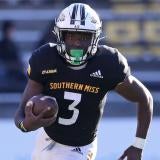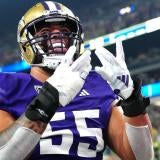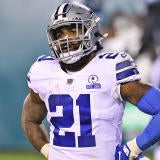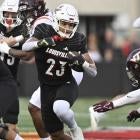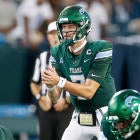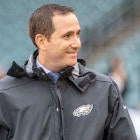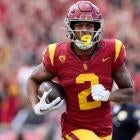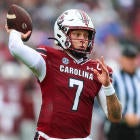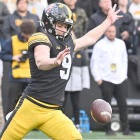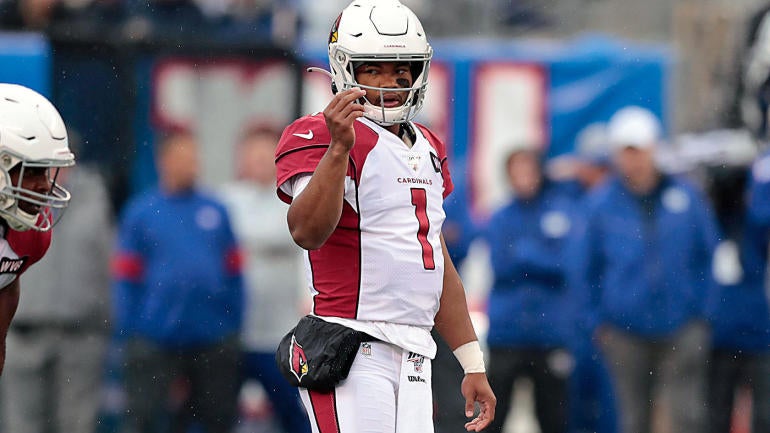
With the reigning NFC champion 49ers, a Seahawks team that has missed the playoffs only once in Russell Wilson's eight seasons as their starting quarterback, a Rams team that still managed to win nine games a season ago in a so-called bad season, and the Arizona Cardinals, this year's offseason champions (with all due respect to the Buccaneers), the NFC West is the NFL's most formidable division. While the odds remain in the 49ers and Seahawks' favor, it's quite possible to make a convincing argument for any of the four teams to win the division. They're all good enough to win double-digit games if things break their way.
Which means, the margin for error is small. As much as the division will be decided by the likes of Russell Wilson and Jimmy Garoppolo, it'll also be decided by the young up-and-coming players who have yet to make the leap from promising to actually great. In that sense, projecting the outcome of the NFC West isn't easy. It's not easy to know, at this point in the calendar, how those young players will fare in 2020. But that's what also makes the NFC West so exciting. If, say, Kyler Murray is one of those young players who does make the leap after an encouraging rookie season, the Cardinals have a legitimate chance to flip the entire division on its head by going from worst to first.
With all that in mind, as we continue our summer series here at CBS Sports, today we're checking in with the NFC West and the four players who are still on their rookie contracts and will shape the outcome of the division. We begin in Arizona with a rather obvious selection.
Arizona Cardinals: Kyler Murray
Drafted: No. 1 in 2019
Final year of rookie deal: 2023 (fifth-year option available)
No need to overthink this. Kyler Murray plays the most important position in the sport. The Cardinals took him No. 1 overall a year ago despite using a top-10 pick on Josh Rosen the year prior, even though Nick Bosa was sitting there as a safer pick at the top of the draft. Whether or not the Cardinals meet expectations after an incredible offseason that included the acquisition of DeAndre Hopkins comes down to Murray's development in Year 2. If he takes flight, the Cardinals could soar all the way to the top of the division. Which makes Murray the easy choice here.
In his first season, Murray completed 64.4 percent of his passes for 3,722 yards, 20 touchdowns, 12 interceptions, and an 87.4 passer rating, adding 544 yards and four touchdowns on the ground. It was good enough for him to capture Offensive Rookie of the Year over the likes of A.J. Brown and Josh Jacobs. Still, there's plenty of room for Murray to improve. He averaged only 6.9 yards per attempt, which ranked 21st among qualified quarterbacks. The advanced metrics aren't particularly kind to Murray, who ranked 21st in both DYAR and DVOA and 15th in total QBR. Murray was sacked 48 times in 16 games, indicating he needs better pass protection in 2020 if he's going to make the leap, but he also needs to exercise better decision making in the backfield. Some of those sacks were on him.
None of this is intended to portray Murray as a bad quarterback. He had a great rookie season for a team that was nearly unwatchable the year prior. He has the look of a future star, especially in the aftermath of the Hopkins trade. But Murray hasn't entirely made the leap yet. He still has something to prove. If he does make the leap, the Cardinals should be in the thick of the division title race. I'm guessing he will, which should set up a rather intriguing battle atop the NFC West.
Los Angeles Rams: Cam Akers
Drafted: No. 52 in 2020
Final year of rookie deal: 2023
Todd Gurley is gone and the Rams were desperate for a suitable replacement. Just how desperate were they for a new star running back? Even though they entered the 2020 draft with limited selections, due largely to the Jalen Ramsey trade, and holes at other more important areas of their roster, they still decided to use their top pick on a running back. That running back? Cam Akers.
The Rams are hoping Akers becomes their new version of Gurley in McVay's offense that was at its peak when Gurley looked like the best running back in football. From 2017-18, during McVay's first two seasons with the Rams, Gurley racked up 3,924 yards and 40 touchdowns from scrimmage, both of which led the league in that span by wide margins. In those two seasons, the Rams posted a 24-8 record and their offenses ranked first and second in scoring. But in 2019, Gurley saw his production nosedive as that mysterious knee injury appeared to hinder him. Gurley averaged 4.2 yards per touch after averaging 6.0 yards per touch in those two aforementioned seasons, and the Rams' offense fell to 11th in points and 17th in DVOA. Gurley has since been released. The Rams are now trying to replace him with Akers -- not to mention, Malcolm Brown and Darrell Henderson, both of whom failed to impress when given chances last season.
It's not fair to pin the entire offense's regression on Gurley. It has just as much -- if not more -- to do with McVay and quarterback Jared Goff. In that sense, it's also not fair to pin the Rams' aspirations in 2020 entirely on a rookie running back. But it's also clear that McVay's offense values a star running back. Why else would the team use their top pick on a running back when clear needs existed elsewhere?
You can criticize that decision all you want, but it's only increased the pressure on Akers to perform up to expectations. It's one thing to use a high pick on a running back who ends up thriving -- see: Christian McCaffrey with the Panthers, who haven't really been criticized for their decision to draft a running back in the first round, largely because CMC has played at an elite level. It's an entirely different thing to use a high pick on a running who ends up disappointing -- see: the Jaguars with Leonard Fournette and the Seahawks with Rashaad Penny. If Akers doesn't look the part, the Rams are going to face an abundance of criticism for that pick.
The good news is that Akers had the look of a future star while at Florida State, where he generated 1,369 yards and 18 touchdowns from scrimmage in his final season. The Rams need him to replicate that success at the next level and they need him to do so almost immediately as they try to rebound from a 9-7 season that was disappointing by the standards established in McVay's first two seasons in charge.
San Francisco 49ers: Solomon Thomas
Drafted: No. 3 in 2017
Final year of rookie deal: 2020 (fifth-year option declined)
Three years after they fleeced the Bears near the top of the draft, moving back only one spot and still getting the player they wanted in Solomon Thomas with the third-overall pick, the 49ers finally need Thomas to put it all together, because to this point it just hasn't happened. In three seasons, Thomas has recorded only six sacks. While he flashed promise in his rookie season with three sacks, 10 tackles for loss, and 11 quarterback hits, those numbers still represent career-highs. He failed to build on that promising rookie season.
The thing is, with a stacked defensive front, the 49ers haven't necessarily needed Thomas to make the leap. They just got to the Super Bowl with Thomas serving as a more rotational option. But in the aftermath of the team's decision to trade away star defensive lineman DeForest Buckner, the 49ers suddenly have a bigger need for Thomas to ascend.
It'll be his final chance to do so, at least in San Francisco. The 49ers declined to pick up Thomas' fifth-year option, making him a free agent after the upcoming season. They also used a first-round pick on Javon Kinlaw, who should start alongside Thomas in the teeth of the 49ers' defense. I was tempted to pick Kinlaw for the 49ers in this section, but Kinlaw deserves more time to develop. He shouldn't be expected to turn into a star overnight. It's different for Thomas, who is on his final chance to break out with the 49ers.
If he does breakout, the 49ers are well-equipped to survive the loss of Buckner. If he doesn't, the 49ers' defense could take a step back in 2020 after ranking second in DVOA a season ago. They need someone to replace Buckner's production. In his final opportunity with the 49ers, Thomas should get the first opportunity to do so.
Seattle Seahawks: L.J. Collier
Drafted: No. 29 in 2019
Final year of rookie deal: 2023 (fifth-year option available)
It's been two years since the Seahawks traded Michael Bennett to the Eagles, and they're still desperately trying to find his replacement. Bennett himself really put it best earlier this offseason.
"Every year, they try to draft a Michael Bennett -- like, 'this is a Michael Bennett type,'" Bennett told the Talkin' Seahawks podcast in March. "Why not have the real Michael Bennett? That's the thing I always see them doing: 'This guy's always like a Michael Bennett' every time."
He's not wrong. First, they tried to replace him with second-round pick Malik McDowell in 2017. Due to an off-the-field injury, McDowell never played a game with the Seahawks. In 2019, they used a first-round pick on L.J. Collier. It's still early in Collier's career, but his rookie season wasn't promising. In 11 games, Collier made three tackles, none of which were sacks. Related: As a team, the Seahawks ranked 31st in sacks -- only the Dolphins finished with fewer. As a result, the Seahawks finished with the league's 18th-ranked defense by DVOA.
Collier isn't singlehandedly responsible for the demise of Seattle's defense -- there are a lot of factors at play -- but a Year 2 breakout would go a long way in fixing a huge problem. The Seahawks need more production out of many of their young defensive players, but Collier is at the top of the list, especially with Jadeveon Clowney still unsigned.








